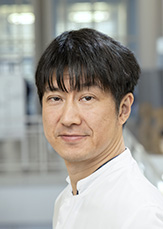We started our research with a whole-body 7T MRI system in 2009. Since then, we have shown in several studies that ultra-high-field MRI is an excellent tool for in vivo visualization of cerebral vascular microstructures.1-4 Our current research focus is intracranial aneurysm depiction, especially in rare, giant, or thrombosed intracranial aneurysms.
In recent years, vessel wall imaging for intracranial aneurysms using gadolinium-enhanced MRI has become more and more popular, as it might serve as a biomarker for aneurysm instability. Wall enhancement patterns of thrombosed intracranial aneurysms on CT and MRI are recognized as clinical alert signs, possibly indicating instability. However, in current imaging techniques, wall enhancement is visualized as a single rim due to insufficient spatial resolution, and microstructures cannot be discriminated in vivo.
This study aimed to investigate the microstructure of thrombosed intracranial aneurysm wall enhancement patterns using ultra-high-field 7T contrast-enhanced MRI in direct comparison with histopathologic findings.
Partial or complete inner wall enhancement correlated with neovascularization of the inner wall layer and the adjacent thrombus. Additional partial or complete outer wall enhancement can be explained by the formation of vasa vasorum in the outer aneurysm wall layer.

